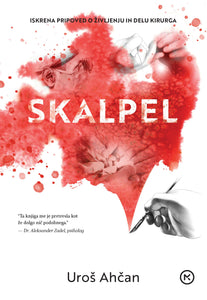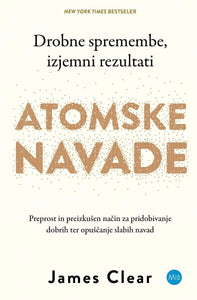Podrobnosti o izdelku
Poglej vseISBN
9783527323302Mladinska knjiga ID
397939Leto izida
2009Datum izida
13.03.2009Status dobavljivosti
Na zalogi pri dobaviteljuJezik
ANGZaložnik
JOHN WILEY & SONS LTDAvtor
HERBERT WALDMANNOpis
Learning Through Case StudiesIntroduces different biological problems taken from everyday lab work, such that students learn how to think in order to solve problems in biology by using techniques and tools taken from chemistry. This book is suitable for students in chemistry, biology and biochemistry.This is the first book to adopt a problem-based approach. It teaches the true basics of the subject through illustrated everyday case studies. The editor's extensive experience in writing textbooks and his close relationship to the authors ensure that the contributions are presented in a pedagogically uniform and highly motivating fashion. Each chapter introduces a different biological problem taken from everyday lab work, such that students learn how to think in order to solve problems in biology by using techniques and tools taken from chemistry. This is a must-have for students in chemistry, biology and biochemistry.Introduction and Preface. List of Contributors. Abbreviations. List of Boxes and Definitions. 1 Yeast-Based Chemical Genomic Approaches (Katja Hubel). 1.1 Introduction. 1.2 The Biological Problem. 1.2.1 Interplay between Organic Chemistry and Biology. 1.2.2 Chemical Genomics. 1.2.3 Small Molecules in Chemical Genomics. 1.2.4 Cell-based Genomic Approaches. 1.2.5 Yeast-Based Chemical Genomic Approaches. 1.3 The Chemical Approach. 1.4 Chemical Biological Research/Evaluation - Chemogenomic Profiling: Elucidating the Mode of Action of Small Molecules. 1.4.1 Assay Principle. 1.4.2 The Yeast Deletion Strain Collection. 1.4.2.1 Homozygous Deletion Strains. 1.4.2.2 Heterozygous Deletion Strains. 1.4.3 Advantages and Disadvantages. 1.4.4 Case Studies. 1.5 Conclusions. References. 2 Microarray-Based Strategies to Identify Unknown Protein Interactions (Sabine Borgmann and Christof M. Niemeyer). 2.1 Introduction. 2.2 The Biological Problem. 2.3 The Chemical Approach. 2.3.1 Introduction to Microarray Technology. 2.3.2 Antibody Microarray for Protein Profiling. 2.3.3 Self-Assembled Protein Microarrays. 2.3.4 Self-Assembled Small-Molecule Microarrays. 2.4 Chemical Biological Research/Evaluation. 2.4.1 Antibody Microarray for Protein Profiling. 2.4.2 Self-Assembled Protein Microarrays. 2.4.3 Self-Assembled Small-Molecule Microarrays. 2.5 Conclusions. References. 3 Compound Collection Synthesis for Chemical Biology (Kamal Kumar). 3.1 Introduction. 3.2 Chemical Probes - a Chemical Question with Biological Consequences. 3.3 Diversity Oriented Synthesis (DOS). 3.3.1 Aims of Diversity Oriented Synthesis. 3.3.2 DOS Based Library Synthesis and Evaluation. 3.4 Biology Oriented Synthesis (BIOS). 3.4.1 Aims of Biology Oriented Synthesis. 3.4.2 BIOS-Based Library Synthesis and Evaluation. 3.5 Conclusions. References. 4 Target Identification and Validation of a WNT/s-Catenin Pathway Modulator (Petra Janning). 4.1 Introduction. 4.2 The Biological Problem. 4.2.1 Target Identification and Validation. 4.2.2 WNT/s-Catenin Pathway. 4.2.3 Modulation of the WNT/s-Catenin Pathway by Small Molecules. 4.3 The Chemical Approach. 4.3.1 High Throughput Screens. 4.3.2 Synthesis of QS11, QS11-NC and Coupling to Solid Support. 4.4 Chemical Biological Research/Evaluation. 4.4.1 Target Identification. 4.4.2 Target Validation. 4.4.3 Mechanism of Action. 4.5 Conclusions. References. 5 Activity-Based Protein Profiling of Cys Proteases (Renier van der Hoorn). 5.1 Introduction. 5.2 The Biological Problem. 5.3 The Chemical Approach. 5.3.1 Epoxide Probes for Papain-Like Cys Proteases. 5.3.2 Acyloxymethylketones for Caspase-like Proteases. 5.3.3 Vinyl Sulfones for Ubiquitin-Specific Proteases. 5.4 Chemical Biological Research/Evaluation. 5.5 Conclusions. References. 6 The Use of Photoaffinity Labeling for the Identification of the Binding Site of the Antibiotic Linezolid (Rolf Breinbauer and Matthias Mentel). 6.1 Introduction. 6.2 The Biological Problem. 6.3 The Chemical Approach. 6.3.1 Synthesis of Oxazolidinone Antibiotics. 6.3.2 Synthesis of Photoaffinity-Labeled Probes. 6.4 Chemical Biological Research/Evaluation. 6.5 Conclusions. References. 7 Surgical Strikes: Uses of Analog Sensitive Technologies to Target Kinases of Interest (Matthias Rabiller and Daniel Rauh). 7.1 Introduction. 7.2 The Biological Problem. 7.3 The Chemical Genetic Approach. 7.3.1 Aim of the Chemical Genetic Approach. 7.3.2 Engineering ASKA Ligand-Kinase Pairs. 7.4 Chemical Biological Research/Evaluation: ASKA Technology - Applications in Molecular Biology. 7.4.1 Kinase Substrate Identification. 7.4.2 Kinase Inhibition Studies. 7.5 Conclusions. References. 8 Modulation of Protein-Protein Interactions by Small Molecules (Stefanie Bovens and Christian Ottmann). 8.1 Introduction. 8.2 The Biological Problem. 8.3 The Chemical Approach. 8.4 Chemical Biological Research/Evaluation. 8.4.1 Homodimerization. 8.4.2 Heterodimerization. 8.4.3 Engineering the Protein-Ligand Interaction. 8.5 Conclusions. References. 9 Targeted Protein Degradation in Live Cells (Markus Kaiser). 9.1 Introduction. 9.2 The Biological Problem. 9.3 The Chemical Approach. 9.3.1 The PROTAC Approach. 9.3.2 Conditional Control of Engineered Protein Stability. 9.4 Chemical Biological Research/Evaluation. 9.4.1 In Vivo Targeted Protein Degradation by PROTACs. 9.4.2 In Vivo Evaluation of Shld-1-Controlled Degradation of DD-POI Fusion Proteins. 9.5 Conclusions. References. 10 Trapoxin B: From Total Synthesis to Epigenetics (Bruno Bulic). 10.1 Introduction. 10.2 The Biological Problem. 10.3 The Chemical Approach. 10.3.1 Properties of Trapoxin B. 10.3.2 Synthesis of the K-trap Affinity Matrix. 10.4 Chemical Biological Research/Evaluation. 10.5 Conclusions. References. 11 Native Chemical Ligation - A Tool for Chemical Protein Synthesis (Christian F.W. Becker). 11.1 Introduction. 11.2 The Synthetic Challenge. 11.3 The Chemical Approach - Native Chemical Ligation. 11.3.1 Principles of Native Chemical Ligation. 11.3.2 Challenges and Limitations. 11.4 Chemical Biological Research/Evaluation - The Ras-RBD System. 11.4.1 Chemical Synthesis of the Ras Protein and Its Effector RBD. 11.4.2 In Vitro Analysis of Synthetic Ras and RBD. 11.5 Conclusions. References. 12 Using Split Inteins to Prepare Semi-synthetic Proteins and to Study the Mechanism of Protein trans-Splicing (Henning D. Mootz). 12.1 Introduction. 12.2 The Biological Problem. 12.3 The Chemical Approach. 12.3.1 Traditional Protein Bioconjugation. 12.3.2 Reprogramming Protein Biosynthesis. 12.3.3 Chemical Ligation Methods for Protein Semi-synthesis. 12.3.4 Chemoenzymatic Ways to Ligate Two Polypeptides. 12.4 Chemical Biological Research/Evaluation. 12.4.1 Mechanism and Structure of Inteins and Split Inteins. 12.4.2 Semi-synthesis Mediated by Protein trans-Splicing. 12.4.3 Investigation of the Mechanism of Protein Splicing Using a Semi-synthetic Intein. 12.5 Conclusions. Acknowledgements. References. 13 Elucidation of the Ras Cycle with Semi-synthetic Proteins (Luc Brunsveld). 13.1 Introduction. 13.2 The Biological Problem. 13.3 The Chemical Approach. 13.3.1 Synthesis of Lipidated Ras-peptides. 13.3.2 Synthesis of Ras-proteins. 13.4 Chemical Biological Research/Evaluation. 13.5 Conclusions. References. 14 The Study of Rab GTPase Recycling Using Semi-synthetic Prenylated Proteins (Kirill Alexandrov, Roger Goody, Herbert Waldmann, and Yaowen Wu). 14.1 Introduction. 14.2 The Biological Problem. 14.3 The Chemical Approach. 14.3.1 Expressed Protein Ligation. 14.3.2 Synthesis of Prenylated Peptides. 14.3.3 Semi-synthesis of Soluble Prenylated Rab Proteins. 14.4 Biological Research/Evaluation. 14.4.1 Structure of Mono- and Di-geranylgeranylated Ypt1 : GDI Complexes. 14.4.2 Quantitative Analysis of the Interaction between Prenylated Rab and REP/GDI. 14.4.3 Mechanistic Model of REP/GDI-Mediated Membrane Extraction of Rab Proteins. 14.5 Conclusions. References. 15 Development of a Model Cancer Vaccine Candidate Based on the MUC1 Cellular Surface Glycopeptide Epitope (Christian Hedberg and Ulrika Westerlind). 15.1 Introduction. 15.2 The Biological Problem. 15.2.1 Carbohydrates in General. 15.2.2 Mucin 1 and Aberrant Glycosylation in Cancer. 15.2.3 Immunology. 15.3 The Chemical Approach. 15.3.1 Synthesis of Glycosylated Amino Acid Building Blocks. 15.3.2 Synthesis of MUC1 Glycopeptides Conjugated to a Peptide OVA323-339 T-Cell Epitope. 15.3.3 Synthesis of MUC1 Glycopeptides Conjugated to BSA Carrier Protein for ELISA. 15.4 Chemical Biological Research/Evaluation. 15.5 Conclusions. References. 16 The Introduction of Chemical Reporter Groups by Bioorthogonal Ligation Reactions for the Imaging of Cell-Surface Glycans (Rolf Breinbauer and Matthias Mentel). 16.1 Introduction. 16.2 The Biological Problem. 16.3 The Chemical Approach. 16.3.1 Preparation of Cell-Surface Glycans Exhibiting an Azide Moiety. 16.3.2 Synthesis of Alkyne-Tagged Fluorescent Probes. 16.4 Chemical Biological Research/Evaluation. 16.5 Conclusions. References. 17 Sequence Specific DNA-Binding Small Molecules for Protein Recruitment and Modulation of Transcription (Hans-Dieter Arndt and Sascha Baumann). 17.1 Introduction. 17.2 The Biological Problem - Targeting DNA with Small Molecules. 17.3 The Chemical Approach: The Polyamide Rationale. 17.4 Chemical Biological Research/Evaluation - Polyamides in Biological Applications. 17.4.1 Hypoxia Inducible Factor. 17.4.2 Artificial Activators. 17.5 Conclusions. References. 18 G-Quadruplex Ligands as Tools for Elucidating c-MYC Transcriptional Regulation (Barbara Sacca and Markus Kaiser). 18.1 Introduction. 18.2 The Biological Problem. 18.3 The Chemical Approach. 18.4 Chemical Biological Research/Evaluation. 18.5 Conclusion. References. Index.
Pogosto kupljeno skupaj
Prikaži vse podrobnosti

Broširana
Ostali so si ogledali tudi ...


5.0 / 5.0
5.0 (1) 1 skupno število pregledov
AIDEA KLEMEN SELAKOVIČVezava: Integralna
Na zalogi v 48 poslovalnicah takoj ali preko spletnega naročila

Vezava: Trda
Na zalogi v 47 poslovalnicah takoj ali preko spletnega naročila

Vezava: Mehka
Na zalogi v 11 poslovalnicah takoj ali preko spletnega naročila

Vezava: Integralna
Na zalogi v 47 poslovalnicah takoj ali preko spletnega naročila

Vezava: Integralna
Na zalogi v 48 poslovalnicah takoj ali preko spletnega naročila

Vezava: Mehka
Na zalogi v 15 poslovalnicah takoj ali preko spletnega naročila

Vezava: Broširana
Na zalogi v 20 poslovalnicah takoj ali preko spletnega naročila

Vezava: Mehka
Na zalogi v 47 poslovalnicah takoj ali preko spletnega naročila

Več kot pol milijona knjig
Največja ponudba slovenskih in tujih knjig na enem mestu.

Enostaven nakup
Do izbranega le z nekaj kliki na spletu ali v eni od več kot 50 knjigarn.
Strokoven nasvet
Pred nakupom nas pokličite za nasvet ali se oglasite v knjigarni.

Vse za šolo
Nagrajena izobraževalna gradiva in kakovostne potrebščine.

Celovita ponudba za dom in pisarno
Vrhunski izdelki priznanih blagovnih znamk.
Brezplačna dostava
Brezplačna dostava za vsa naročila nad 59 € (za šolske pakete nad 140 €)
Knjigarne
Zaloga
×Osveženo 26.03.2023 10:09
Z domišljijo in znanjem povezani v skupnost.
NaslovSlovenska cesta 29, 1000 Ljubljana
E-naslovSpletna knjigarna: info@emka.si, Mladinska knjiga založba: info@mladinska-knjiga.si
Kontakt01 241 30 00
Brezplačna številka080 12 05
Prijava na e-novice
© 2024 Mladinska knjiga. Vse pravice pridržane.
- Ko izberete elemente, se celotna stran osveži.
- Odpre se v novem oknu.


 >
>
 >
>
 >
>
 >
>
 >
>

